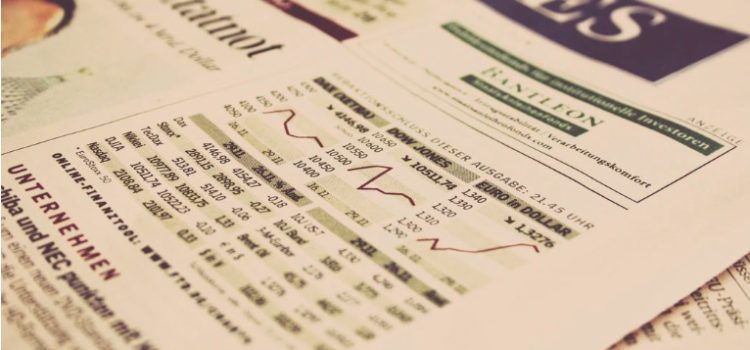

This article is an excerpt from the Shortform book guide to "The Intelligent Investor" by Benjamin Graham. Shortform has the world's best summaries and analyses of books you should be reading.
Like this article? Sign up for a free trial here .
What is the margin of safety in stocks? Why is it important to know about the margin of safety before making an investment?
The margin of safety in stocks is a measure of how much can go wrong before an investment goes bad. The margin of safety is one of the most famous concepts in Benjamin Graham’s The Intelligent Investor.
Read more about the margin of safety, stocks, and how to invest.
Margin of Safety: Stocks That Should Be Safe
Graham ends The Intelligent Investor with one of his most famous concepts: margin of safety in stocks. The concept underlies much of what we’ve covered in this summary; here, we can explicitly discuss it as a satisfying conclusion.
In simple terms, margin of safety in stocks is a measure of how much can go wrong before an investment goes bad. If you make investments with a larger margin of safety, you have a greater likelihood of prevailing in the end.
Warren Buffett offers an analogy: If you’re designing a bridge that tends to support 10,000 pounds in everyday traffic, you should design it to carry 30,000 pounds.
For a concrete example, consider how the margin of safety in stocks varies based on a stock’s price-to-earnings ratio.
- A stock with a high price-to-earnings ratio has extraordinary expectations from the market—the company is expected to grow quickly over an extended future period. A high valuation today therefore is strongly dependent on its future outcomes. The higher the price-to-earnings ratio, the lower the margin of safety: everything expected of the company must go right. Its growth prospects need to materialize, it cannot be stifled by competition or regulation, management must continue to be excellent, and so on. If any linchpin falters, the company’s value will drop sharply, as will the value of the investment. (Shortform note: This is why stocks in speculative price ranges tend to be more volatile to bad news—the current high price already assumes most things will work out, so news that contradicts this belief shatters the current valuation.)
- In contrast, a stock with a low price-to-earnings ratio has a high margin of safety. Your investment can endure a range of conditions before it clearly turns south. For example, the macroeconomic environment can turn bearish, and the company may suffer a temporary setback. But because the stock was a bargain to begin with, it may not have much more to fall; but in good times, it has much room to grow.
Likewise, many of Graham’s investment criteria we’ve covered have margin of safety built into them:
- Interest coverage ratio: If a company’s earnings covers 5 times its interest expenses, then even if it suffers a sudden 20% drop in earnings, it has more than enough earnings remaining to continue paying interest and thus avoiding defaulting on debt. In contrast, a company that can only cover 1 times its interest expense is in danger of defaulting with just small setbacks to earnings.
- Price to book value: If you buy stock in a company when its market value is two-thirds of book value, the company’s book value can shrink by one-third before your investment becomes negative (relative to book value).
- Asset to liabilities ratio: If a company has assets at multiple times its liabilities, it can lose significant value before its bondholders suffer a loss.
- Long history of dividends and positive earnings: A company that has a long history of paying dividends suggests consistent profitability, thus providing a cushion in recessions. In contrast, a company that has never paid dividends and is currently unprofitable may be on the edge of collapsing.
Margin of safety explains why a high-functioning company may still be a bad investment at too high of a stock price. The margin of safety evaporates as the price rises well above the company’s fair value. Likewise, a bargain company that is otherwise ignored by the market can be a great investment—there is significant margin of safety before your investment turns sour.
Earning Power and Bond Rate
To define the margin of safety of a stock more technically, compare the earnings yield of the company with the current going bond rate.
- Earnings yield is the inverse of the P/E ratio: the company’s earnings per share divided by the stock price.
- The bond rate is the interest rate, representing a low-risk investment return.
The larger the difference, the larger the margin of safety.
- For example, if the earnings yield is 9% (implying a P/E multiple of around 11), and the bond rate is 4%, the margin is 5%.
- In contrast, at a high P/E multiple of 30, the earnings yield is 3.3%, which is below the bond rate and thus indicative of a low margin of safety.
(Shortform note: Graham refers to earnings yield as “earning power,” but in modern times this has a different definition.)
Diversification Provides Margin of Safety in Stock Investments
We can generalize the concept of margin of safety from one security to considering a portfolio of securities.
Putting all your investment funds into a single stock has a low margin of safety—that stock must perform well, or your investment will fail.
In contrast, by diversifying your stock portfolio, you spread the risk across a large number of stocks. The probability that all of them will fail spectacularly at the same time is quite low. With a high margin of safety, more things can go wrong while your investment continues to be successful.
Margin of Safety: Stocks for Speculators vs. Investors
One way to distinguish speculators from investors is to understand each group’s conception of margin of safety.
Speculators base their margin of safety on shaky ground. For instance, they might think, “the market still has quite a lot of room to go up, so buying now means I can withstand quite a fall before my investment goes negative.” We already know that no one can predict whether the market will move up or down with any long-term consistency; thus, this margin of safety is illusory.
In contrast, investors define their margin of safety from simple mathematical metrics, such as price-to-earnings ratio and assets-to-liabilities. These metrics have proved their reliability over decades of investment experience and are not subject to the whims of human psychology.
A Higher Margin of Safety Makes Investing Easier
A larger margin of safety prevents you from needing to be clairvoyant or unusually clever. You may not be able to predict market downturns or company setbacks, but with a large margin of safety, that doesn’t matter—your investment can still be successful.
Margin of safety applies not just to outside conditions and company performance, but also to your own analytical accuracy. You might misprice a company through your calculations, but with a wide enough margin of safety, your minor mistakes don’t matter.
If you can find a legitimate bargain, then it’s likely to be a good investment. It doesn’t matter what investment analysts are saying, whether the stock went up or down on the last day, what next year’s earnings projections are, what complicated “discounted cash flow” models show, and so on. A bargain is a bargain. You can ignore the noise.
As Warren Buffett has said about value investing, “if a business is worth a dollar and I can buy it for 40 cents, something good may happen to me.”

———End of Preview———
Like what you just read? Read the rest of the world's best book summary and analysis of Benjamin Graham's "The Intelligent Investor" at Shortform .
Here's what you'll find in our full The Intelligent Investor summary :
- Key advice from what Warren Buffett considers the "best book about investing"
- The 2 major indicators you should use for evaluating stocks
- How you can use aggressive or defensive investing strategies






